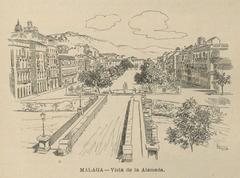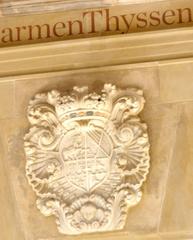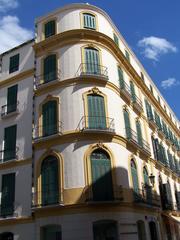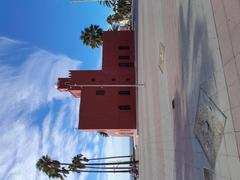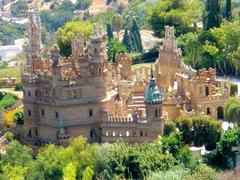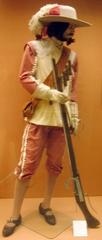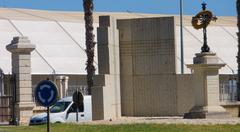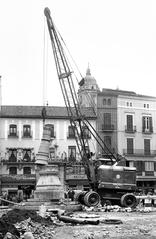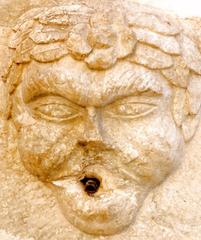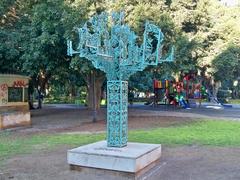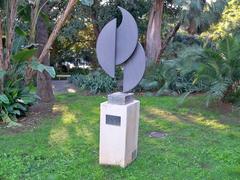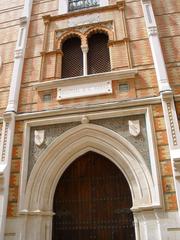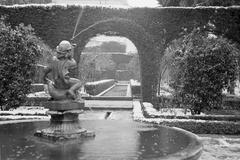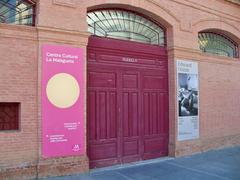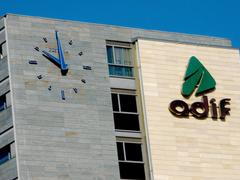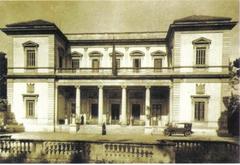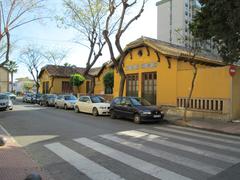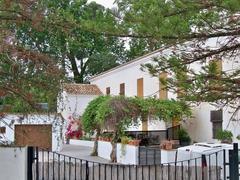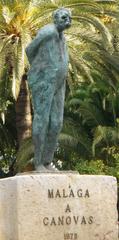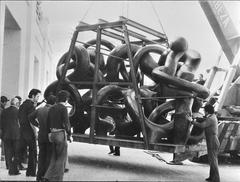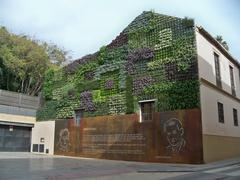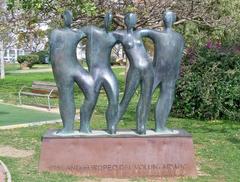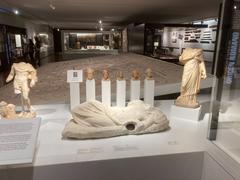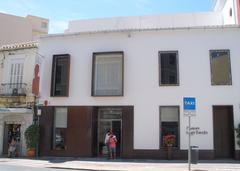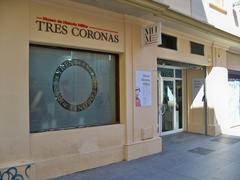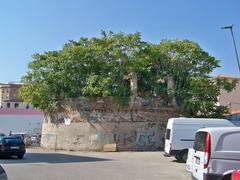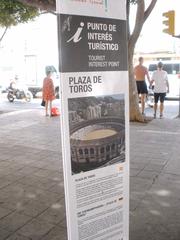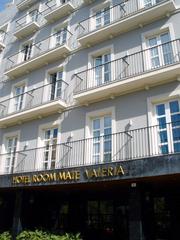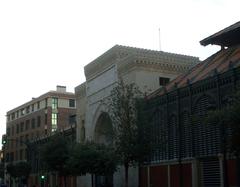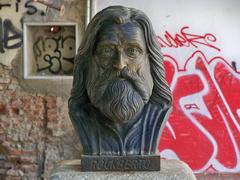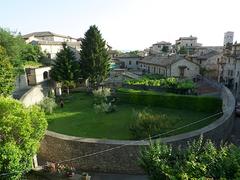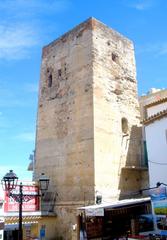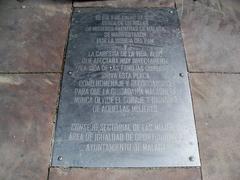Casa de las Monjas Málaga: Comprehensive Guide to Visiting Hours, Tickets, and Historical Significance
Date: 14/06/2025
Introduction
Nestled in the heart of Málaga’s historic center, Casa de las Monjas is a captivating emblem of the city’s rich Baroque heritage and religious history. Originally constructed in the late 17th and early 18th centuries, this former convent complex offers visitors an immersive journey through Málaga’s spiritual and architectural evolution. Renowned for its remarkable Baroque camarín—a lavish octagonal chapel dedicated to the Virgin of the Aurora—the site encapsulates centuries of cultural significance, from its roots with the Congregación del Rosario de la Aurora to its period as a convent for the Dominicas de la Divina Providencia.
Over time, Casa de las Monjas has undergone significant transformations, mirroring the broader urban and social changes in Málaga. Recent restoration efforts have preserved its most artistic features, ensuring that it remains accessible to the public and stands as a testament to the city’s commitment to heritage conservation. Whether you are a history enthusiast, architecture lover, or cultural traveler, this definitive guide provides all the essential information you need for a memorable visit, including practical details on visiting hours, ticketing, accessibility, and nearby attractions.
For authoritative historical context and updates, consult Diario Sur, Malaga Hoy, and the official Málaga tourism website.
Table of Contents
- Introduction
- Origins and Historical Overview
- Architectural Features & Artistic Value
- Decline and Restoration
- Practical Information for Visitors
- Guided Tours & Cultural Programming
- Seasonal Events & Best Times to Visit
- Frequently Asked Questions (FAQ)
- Conclusion
- Additional Resources
Origins and Historical Overview
Casa de las Monjas, situated in Málaga’s historic core, is a striking example of Baroque religious architecture from the late 17th and early 18th centuries. Its origins are closely linked to the Congregación del Rosario de la Aurora, a lay brotherhood significant to Málaga’s spiritual and social life during the Baroque period. In 1713, the congregation built the octagonal camarín within the property, marking its ascent as a focal point of local devotion and artistic achievement (Diario Sur; Wikipedia).
In 1728, the building transitioned into a convent for the Dominicas de la Divina Providencia, who used the camarín for religious services and remained until 1787. The convent then relocated, but the site retained its name, Casa de las Monjas (Wikipedia).
Architectural Features & Artistic Value
The Camarín: Baroque Jewel
The camarín is Casa de las Monjas’ most significant architectural feature—an octagonal, three-story chapel tower richly adorned with stucco, gilded Solomonic columns, and religious iconography dedicated to the Virgin of the Aurora. Its elaborate plasterwork and dynamic light effects, courtesy of strategically placed windows, are hallmarks of the Andalusian Baroque style (Malaga Hoy).
Layout and Conservation
The convent is organized around a central Andalusian patio, with residential wings converted into public apartments surrounding the camarín. Much of the original façade’s mural paintings have been lost, but the camarín and main façade have been carefully preserved as protected heritage elements (Diario Sur). The architectural typology reflects a single-nave church, a locutorio (parlor with iron grilles), and a torno (rotating hatch), blending elements typical of female religious communities (malagahistoria.com).
Decline and Restoration
After the nuns’ departure, Casa de las Monjas became a communal housing “corralón” before falling into disrepair by the late 20th century. In 1998, most of the structure was demolished for public housing, but heritage authorities preserved the camarín and façade (Malaga Hoy).
A significant restoration project began in 2022, focusing on stabilizing and restoring the camarín’s decorative elements. Structural consolidation, stucco restoration, and improved visitor access are central to this ongoing work (La Opinión de Málaga).
Practical Information for Visitors
Visiting Hours & Tickets
- Hours: Tuesday to Sunday, 10:00 AM to 6:00 PM. Closed Mondays and public holidays.
- Tickets: Admission is typically €5 for adults, €3 for students/seniors, and free for children under 12. Guided tours are available for an additional fee and are highly recommended for a deeper appreciation.
Accessibility
Casa de las Monjas is wheelchair accessible, with ramps and elevators to the camarín and other public areas.
Getting There
Located in Málaga’s historic center, the site is easily reached on foot or via public transport. The nearest bus stops are within a five-minute walk, and several public parking garages are nearby.
Amenities
- Gift shop with books, religious items, and crafts
- Restrooms and seating areas
- Occasionally, a café or refreshment kiosk
- Free Wi-Fi in public areas
Photography Tips
Photography is permitted in most areas except inside the camarín, where restrictions protect delicate artworks. The exterior and patio offer excellent photo opportunities, especially in early morning or late afternoon light.
Nearby Attractions
Guided Tours & Cultural Programming
Guided tours in Spanish and English are offered regularly and provide rich insights into the architecture, history, and religious significance of Casa de las Monjas. Audio guides may also be available.
The site frequently hosts exhibitions, concerts, and workshops focused on Málaga’s religious heritage and Baroque artistry. Special programming is featured during major festivals such as Semana Santa and Feria de Agosto (The Crazy Tourist).
Seasonal Events & Best Times to Visit
- Festivals: Semana Santa and Feria de Agosto feature special exhibitions and extended hours.
- Best Times: Spring and autumn offer pleasant weather and fewer crowds. Summer is busier and hotter, while winter provides a quieter atmosphere.
Frequently Asked Questions (FAQ)
Q: What are the opening hours?
A: Tuesday to Sunday, 10:00 AM to 6:00 PM; closed Mondays and public holidays.
Q: How do I buy tickets?
A: Purchase onsite or online. Advance booking is recommended during peak periods.
Q: Is Casa de las Monjas accessible?
A: Yes, most public areas are wheelchair accessible; contact the site for specific needs.
Q: Are guided tours available?
A: Yes, in multiple languages. Book in advance for availability.
Q: Can I take photos inside?
A: Allowed in most areas except the camarín; always observe posted guidelines.
Conclusion
Casa de las Monjas stands as a rare Baroque relic and a vital link to Málaga’s religious and urban history. With its stunning camarín, engaging tours, and thoughtful visitor services, it is a must-see for anyone exploring the city’s historical heart. For the latest updates on hours, tickets, and special events, visit the official Málaga tourism website.
Enhance your visit by downloading the Audiala app for audio guides and interactive maps. Follow us on social media for restoration news, exclusive content, and insider travel tips.
Additional Resources
- Diario Sur – Casa de las Monjas
- Malaga Hoy – Baroque Architecture in Málaga
- Wikipedia – Casa de las Monjas
- La Opinión de Málaga – Restoration Project
- malagahistoria.com – Convents in Málaga
- The Crazy Tourist – Best of Málaga
- Conde Nast Traveler – Málaga Guide
- Official Málaga Tourism Site
Visual Suggestions:
- Exterior view of Casa de las Monjas with Baroque camarín tower (alt: “Casa de las Monjas Málaga exterior with Baroque camarín tower”)
- Interior of the camarín showing stucco decoration (alt: “Baroque stucco decoration inside Casa de las Monjas camarín, Málaga”)
- Central patio with fountain (alt: “Central patio of Casa de las Monjas convent, Málaga”)
- Map highlighting Casa de las Monjas’ location (alt: “Map showing location of Casa de las Monjas in Málaga”)
For a deeper dive, consider a virtual tour or QR code from the official site for pre-visit planning.
